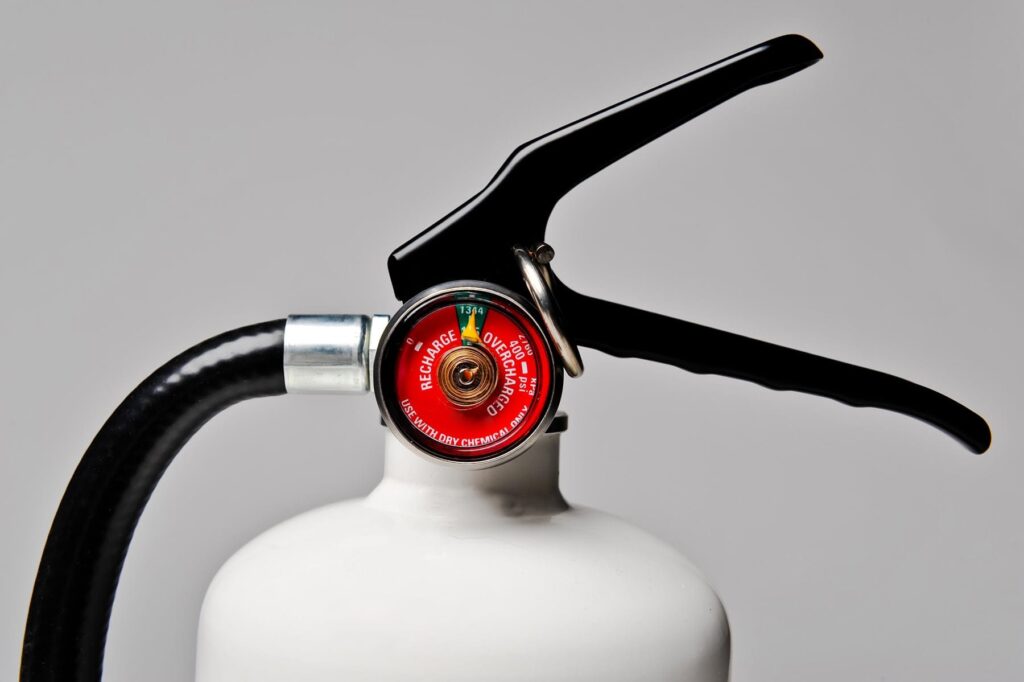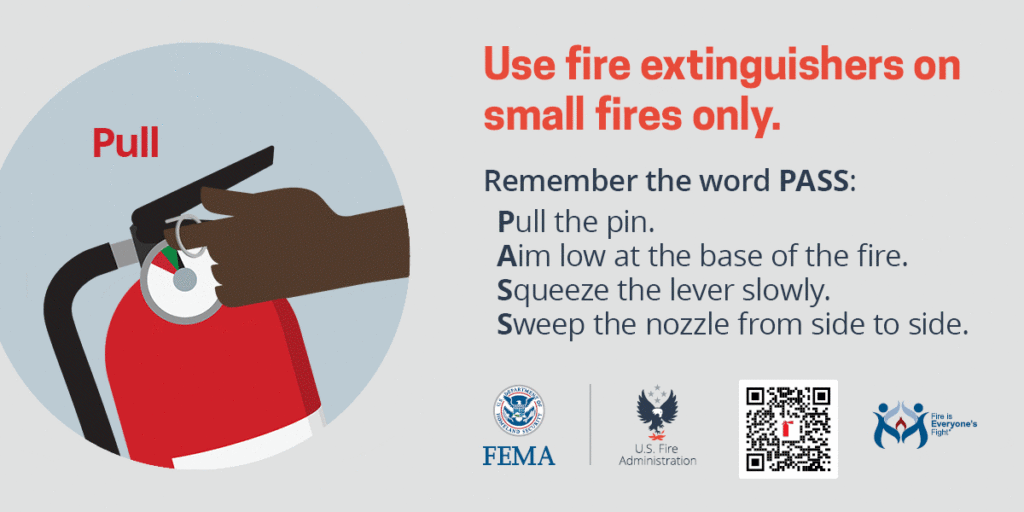Having a fire extinguisher in your home is crucial for protecting your family from accidental fires. However, it’s not enough just to have one—you must know how to properly use it and keep it in working condition. Above all, if you’re not confident in controlling a small, contained fire, it’s always more important to evacuate your home and call 911. Getting your family to safety should be the top priority. Here’s what every homeowner needs to know about fire extinguishers, from selecting the right type to knowing when and how to use one safely.
Choosing the Right Fire Extinguisher for Your Home
Selecting the proper extinguisher for different areas of your home is key to fire safety. Each type is designed for specific fire hazards:
- Class A: Designed for ordinary materials like cloth, wood, and paper, these extinguishers are commonly used in homes and businesses.
- Class B: Ideal for flammable liquids such as grease, gasoline, and oil, these extinguishers are also commonly found in residential settings.
- Class C: For fires involving electrical equipment, Class C extinguishers use a non-conductive agent to ensure safety around appliances and power tools.
- Class D: These are specialized extinguishers for flammable metals, usually found in industrial settings.
- Class K: Best for commercial kitchens, Class K extinguishers handle fires involving cooking oils and fats.
For most homes, ABC or BC extinguishers are multipurpose options that can handle common fire types. When purchasing, ensure your extinguisher is certified by looking for the “UL Listed” or “ULC Listed” label.
Maintaining Your Fire Extinguisher

Photo Credit: usfa.fema.gov
A well-maintained extinguisher is essential for reliable performance in an emergency. Here are a few tips:
- Ensure easy access: Keep the extinguisher in a location where it can be quickly reached, and avoid obstructing it with objects.
- Check the pressure: Many extinguishers have a gauge to indicate whether the pressure is within the appropriate range. Replace it if the pressure is too low or if it’s expired.
- Inspect parts: Regularly check that the canister, hoses, and nozzles are in good condition and free of rust or damage.
- Keep it clean: Remove dust, oil, or debris that could affect the extinguisher’s performance.
Key Places to Keep Fire Extinguishers
Where you place your extinguishers can make a big difference in an emergency. Here are five essential locations:
- The Kitchen: Since cooking fires are the leading cause of home fires, place an extinguisher within 30 feet of your stove, but not too close where flames could prevent access.
- Near Heat Sources: Position extinguishers near any heating equipment like fireplaces or space heaters, but keep them at a safe distance to avoid direct exposure to heat.
- Each Floor: Ensure every level of your home has at least one extinguisher for quick access.
- The Garage: Garages often contain flammable materials such as gasoline, oils, and chemicals, making this a high-risk area. Ensure your extinguisher is labeled for flammable liquids.
- Bedrooms: Fires often occur at night, so having an extinguisher in or near bedrooms is critical. Even children can be trained to use one safely in an emergency.
When to Use a Fire Extinguisher
While having an extinguisher is crucial, knowing when to use it is even more important. Ask yourself these questions before deciding to act:
- Have I alerted everyone in the home?
- Has someone called 911?
- Am I physically capable of using the extinguisher?
- Is the fire small and contained, such as in a pan or wastebasket?
- Am I safe from the fire’s smoke and do I have a clear escape route?
If you can answer “yes” to these questions, using a fire extinguisher may be appropriate. If any answer is “no,” prioritize evacuating your home and waiting for professional firefighters.
Using a Fire Extinguisher: The PASS Technique

Photo Credit: usfa.fema.gov
If you’re ready to use a fire extinguisher, remember the acronym PASS for correct usage:
- Pull the pin: This unlocks the extinguisher and allows you to discharge it. Hold the nozzle pointing away from you.
- Aim low: Point the nozzle at the base of the fire, not at the flames.
- Squeeze the handle: Apply slow and steady pressure to release the extinguishing agent.
- Sweep the nozzle: Move the nozzle side-to-side until the fire is fully extinguished.
Final Thoughts
Fires can occur without warning, but having the right tools and knowledge can make all the difference. A well-placed and maintained fire extinguisher, combined with the right know-how, can help prevent small fires from becoming disasters. Always remember—your safety and the safety of your family are the top priorities. If in doubt, evacuate and leave the firefighting to professionals.
Sources:
https://www.usfa.fema.gov/prevention/home-fires/prepare-for-fire/fire-extinguishers
https://resources.impactfireservices.com/key-places-keep-fire-extinguishers-in-your-home
